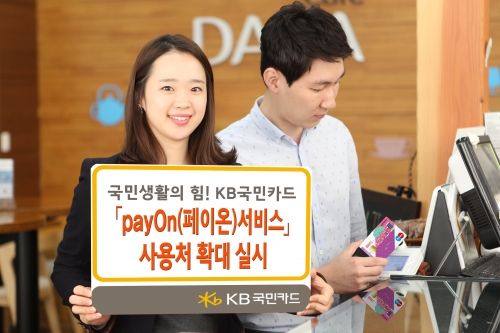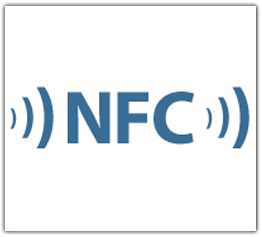SEOUL, KOREA - A smart payment system that simply requires consumers to wave their cards over a reader at the point of sale will soon become available on a larger scale.

Credit card companies offering post-paid transportation card services are set to expand the number of PayOn service member stores. The PayOn service has been thus far available in a limited manner (e.g. public transit fares, vending machines, and small purchase transactions at canteens), but will soon be available at convenient store chains like 7-Eleven and Buytheway, cafes like Mango six, and cosmetics stores like It’s skin. Within the first half of 2013, Starbucks and stores located in all the train station buildings nationwide will utilize the PayOn service.
The expansion of PayOn service member stores has arrived on the heels of card companies offering post-paid transportation card services joining forces. In June of 2012, 10 credit card companies (including KB Kookmin Card, Samsung Card, Hyundai Card, HanaSK Card, KEB Card, and NH Nonghyup Card), Korea Financial Telecommunications & Clearing Institute (KFTC), and Sehan RF System signed a PayOn service joint operation contract and set up a PayOn council. The fruit of these endeavors is increasing the availability of transactions through contactless payment services. The PayOn council is tasked with multifaceted joint marketing activities such as the selection of PayOn service member stores and the implementation of varied promotions. The PayOn council predicted that the recent increase in the number of PayOn service member stores will rapidly escalate the use of PayOn services, especially in franchisees like fast food chains.
What is the PayOn service
The PayOn service is a credit card payment system built on the next-generation communications technology “NFC (Near Field Communication).” It is a Korean-style contactless credit card payment system capitalizing on credit cards’ transit fare payment functionality which does not require the act of inserting and swiping a card through a reader. KB Kookmin Card and Shinhan Card were the two early pioneers to introduce the PayOn service in 2007. Just likes subway or bus fares are paid with a single tap on a card reader, placing a plastic credit card against a NFC-enabled smartphone will complete the entire transaction processes. The plastic card is embedded with a post-paid transit fare payment chip that enables the PayOn service. In other words, the PayOn service allows for grafting the function of making small amount transactions onto post-paid transportation cards.

The PayOn service is an express payment system that takes only a single tap, therefore eliminating all the hassle of inserting and passing cards through terminals. This system is regarded as a next-generation transaction system since it does away with long queues in front of Point-of-Sale (POS) machines, slashing waiting times. Also, it significantly eases fears over personal information leaks since the card holder simply taps his card on the reader.
The PayOn service has basked in great attention from other nations. PayOn service solution developers showcased its PayOn service card at CARTES Paris 2012, a smart card exhibition. The CARTES Paris 2012 crowd took note of the fact that PayOn Service was designed as a mobile to mobile solution. The Southeast Asian market, where pre-paid transportation cards have already become mainstream, has also eyed the PayOn service as it adds a credit card function to transportations cards. The chairman of the PayOn council, Ki-ho Byun who heads up the KB Kookmin Card Convergence Department, mentioned, “Korea is the only nation that has a transportation card which doubles as a credit card. Once the PayOn service spreads even further, consumers will experience a genuine smart transaction service.”
The PayOn service necessitates nothing but NFC-enabled smartphones
The PayOn Service is different from existing NFC-based transaction services. While existing NFC-based transaction services use smartphones as a card, the PayOn service has turned smartphones into card readers. Since smartphones serve as RF card readers, there is no need for purchasing extra card terminals. Thus, delivery service providers and door-to-door sales people are able to complete their transactions on the spot as long as they carry NFC smartphones with them. On top of this, there are no credit card sales slips since receipts are texted.
Council Chairman Byun said, “The mobile to mobile solution PayOn was born from the concept of using smartphones as card readers, rather than demanding that all member stores install new card terminals. ” As a result, investment expenses will be reduced while convenience is heightened.
The member card companies of the PayOn council desire to develop card payment infrastructure without installing additional RF terminals. This can be accomplished if PayOn member stores have NFC-enabled smartphones. In fact, the pilot run of such a service has been underway at nearly 2,000 PayOn member stores in five traditional markets in Anyang since November, 2012. The PayOn council is set to bring other traditional markets into its member store pool in the future.
On the Asian market front, the PayOn service is scheduled to be put on display at CARTE Asia 2013 and E-Commerce Asia Expo. These two-day events are slated to be held in the AsiaWorld-Expo in Hong Kong on March 27.


